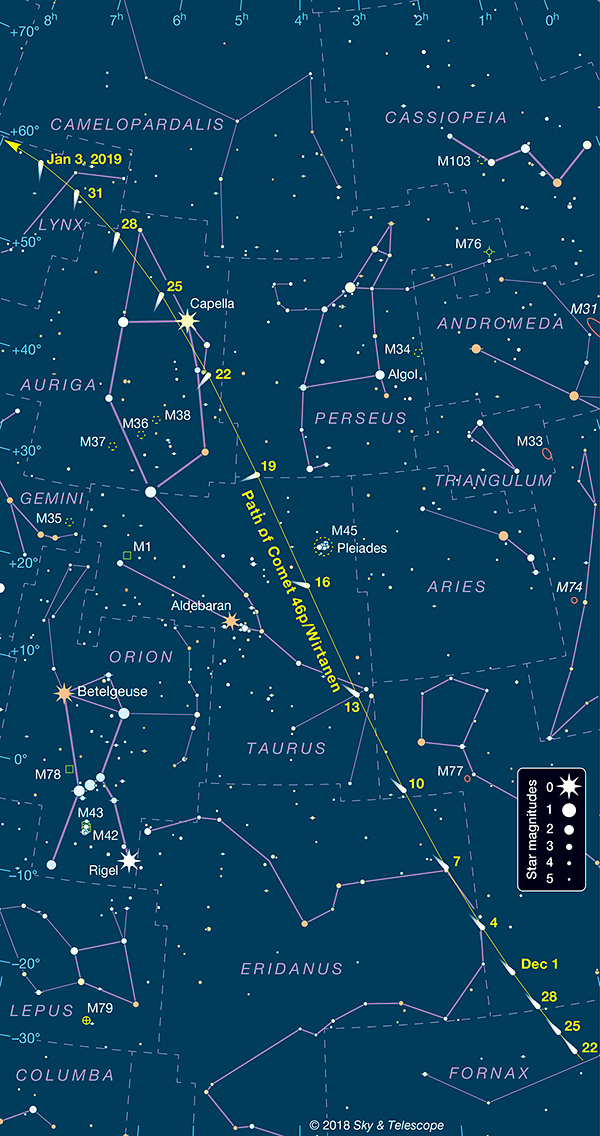How to see 2018's brightest comet (earthsky.org)
By Deborah Byrd and Eddie Irizarry in Astronomy Essentials | Space | December 8, 2018
Comet 46P/Wirtanen is 2018’s brightest comet, but that doesn’t mean it’s bright. Although theoretically visible to the eye now, the comet is large and diffuse … not easy to see. Charts, tips and other info here.
Have you heard about comet 46P/Wirtanen? It’s due to pass closest to the sun on December 12, 2018, and closest to Earth just a few days later, on December 16. Comet Wirtanen is the brightest comet in the night sky now; it’s the brightest comet of 2018. Yet this comet is not easily visible to the eye alone. Astronomers have captured it using telescopes and binoculars (see a collection of photos here). It’s best seen from a dark location. To glimpse it, check to see if your local astronomy club will be hosting events for observing comet 46P/Wirtanen. Or visit the Virtual Telescope Project for a free, online viewing of comet Wirtanen on December 12 and 17.
Want to try to spot the comet yourself, in a dark sky? Keep reading …
As of early December, observers around the world are reporting that Comet 46P/Wirtanen is, in theory, bright enough to be seen with the eye. The problem is that the dim light reflected from the comet is spread over a large cometary atmosphere, or coma.
So you’ll be looking for a large, diffuse, dim object.
Where should you look? See the charts below.

***
more:
https://earthsky.org/space/46p-wirtanen-possibly-visible-to-eye-dec-2018
On Dec. 16 (Beethoven's birthday, FWIW) you can use Betelgeuse (the first magnitude, red supergiant in Orion) and Aldebaran (the first magnitude, red giant in Taurus) as pointers to the comet. This is the astronomical equivalent of 45 marching down Fifth Avenue at noon, leading a parade, and regularly firing a cannon. In other words, damned hard to miss, even if it is pretty dim.
